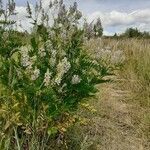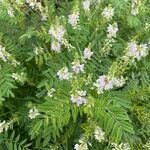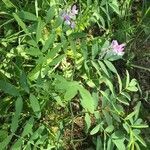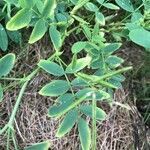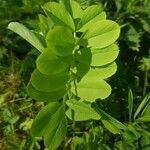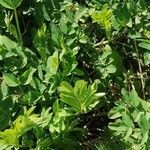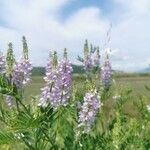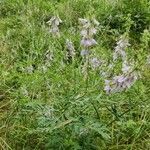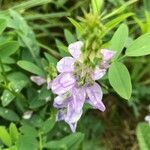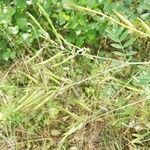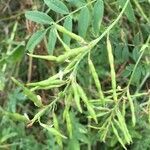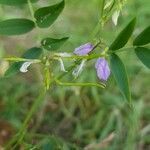A perennial plant. It grows 90-150 cm high and 90-120 cm wide. It is a bushy plant. The leaves are compound with leaflets arranged along the stalk. There can be 17 narrow leaflets. They are soft green. The flowers are pale mauve-pink. The pods are cylinder shape and are constricted between the seeds. The pods are 20-50 mm long.
